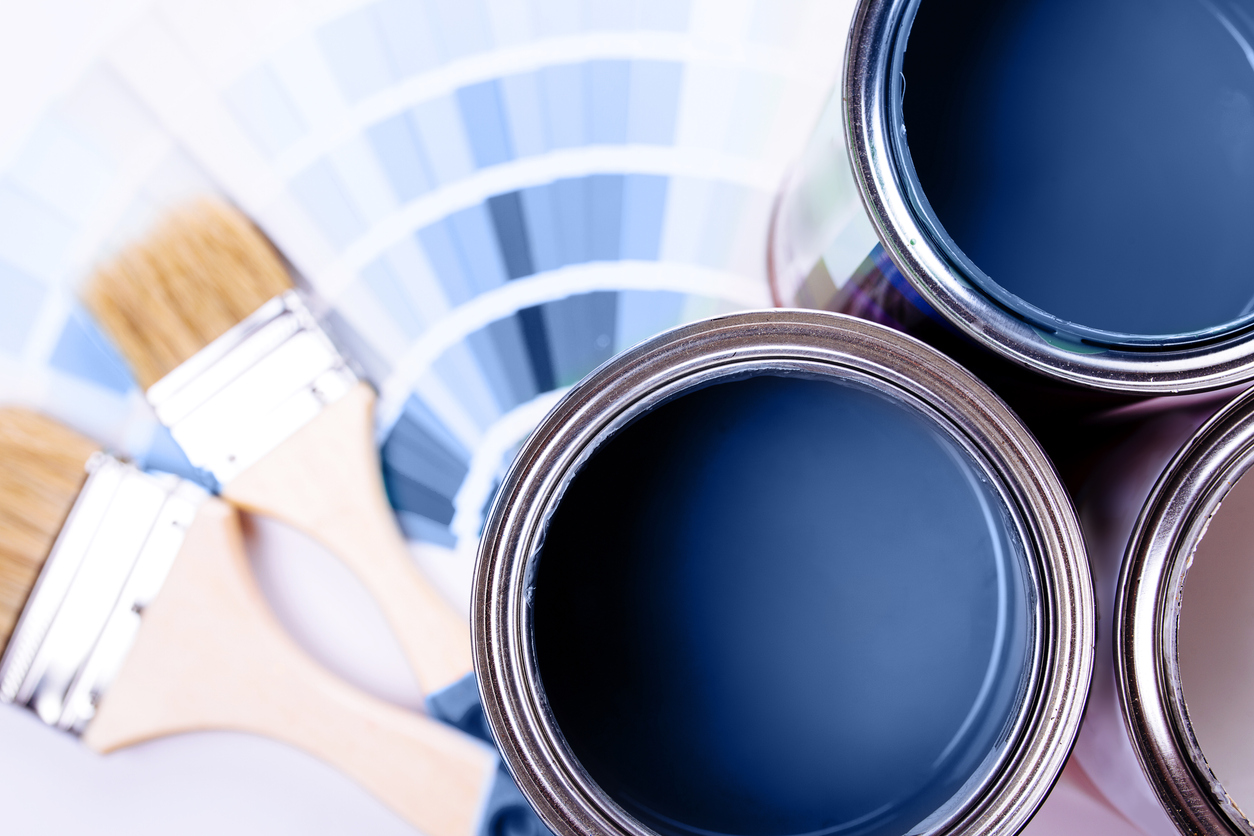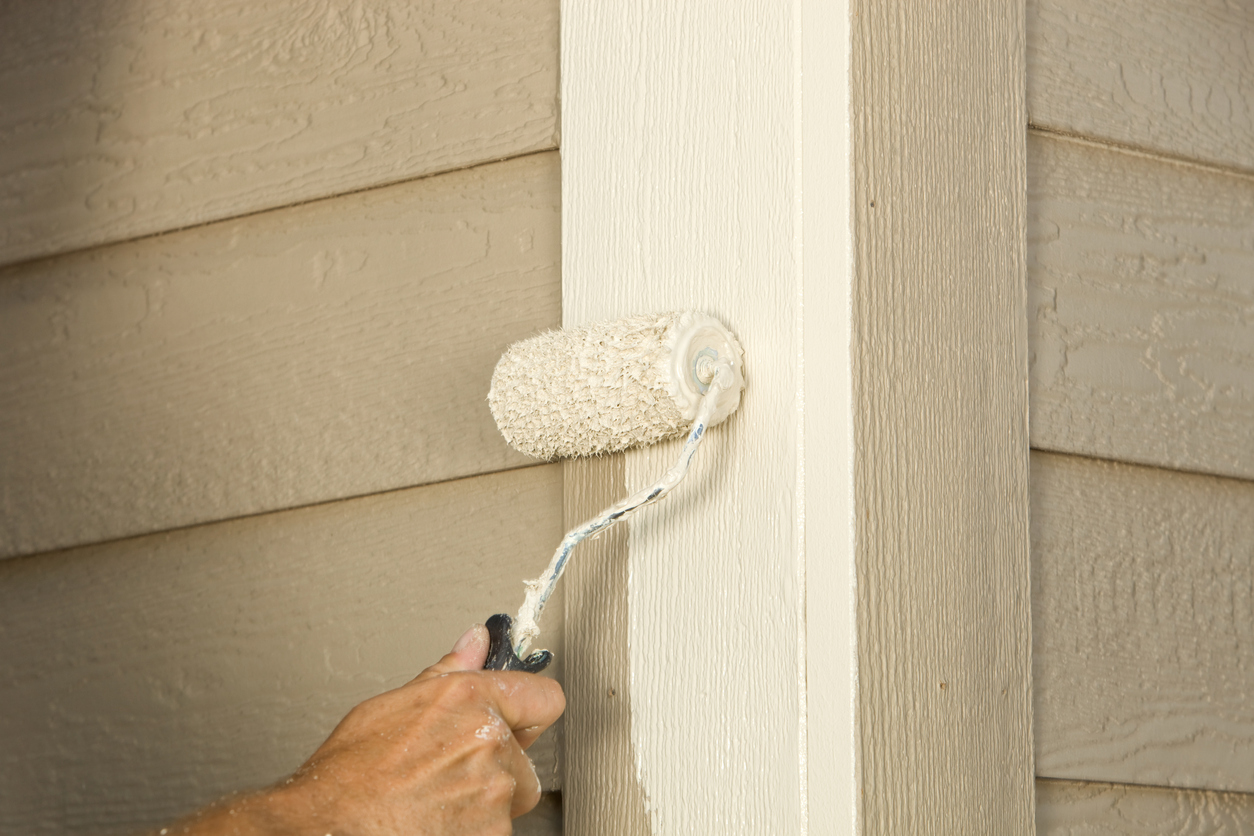We may earn revenue from the products available on this page and participate in affiliate programs. Learn More ›
Q: Recently, I painted the shed in the yard, but when the job was done, I had almost a full can of paint left over. Since I don’t have any other exterior painting projects coming up and I hate to let pricey paint go to waste, I’m considering using it indoors to paint my home office. Can you use exterior paint inside?
A: It’s wise to use leftover paint for similar jobs when possible, but there’s a significant difference between interior and exterior paint. It’s necessary to understand these differences between interior versus exterior paint to answer the question: Can you use exterior paint inside? Specifically designed for indoor environments, interior paint contains fewer harmful chemicals and also tends to bind better to drywall than exterior paint.
Exterior paint is formulated to hold up under rain, sleet, hail, snow, blowing debris, and direct sunlight, but to accomplish this level of durability and resilience, the paint contains powerful chemical components that can be harmful to your health. Additionally, exterior paint may not dry effectively or evenly when used indoors. And, surprisingly, even though it can stand up to all kinds of weather, exterior paint isn’t designed to guard against the kind of stains, scratches, and other abuse the average family can dish out.
Using exterior paint inside should be avoided because it can be hazardous to your health.

The primary reason to avoid using exterior paint inside is that its chemical composition can be harmful to humans. Exterior paint is designed to last for years, despite regularly being exposed to UV radiation, rain, high winds, blowing debris, sleet, hail, and snow. This is possible due to the type of pigments, binders, and the amount of volatile organic compounds (VOCs) used in the formula.
VOCs present the biggest problem, as inhaling or coming into contact with these toxic components can lead to significant health risks. Before using a paint product, it’s recommended to check the ingredients list for any VOCs. Common VOCs include 1,3-butadiene, benzene, ethylene glycol, formaldehyde, methylene chloride, tetrachloroethylene, toluene, and xylene.
When exterior paint dries and cures, the VOCs are released into the air, creating a strong chemical smell. Outdoors, VOCs drift off into the open air, but when this type of paint is used indoors, the chemicals are trapped inside the home. According to the EPA, exposure to VOCs, especially in an enclosed space, can cause a range of problems including headaches, nausea, loss of coordination, irritation to the eyes, nose, and throat, as well as damage to the kidneys, central nervous system, and liver. The exterior paint will continue to emit VOCs, even after it dries, putting you and your family at risk.
Exterior paint will take longer to cure if it’s used indoors.
Beyond the health implications, there are several additional reasons why exterior paint is a poor choice for an interior painting project. For one, when used indoors, exterior paint can take a significantly longer time to dry and cure, as compared to products designed for interiors. What’s more, this extended drying time often affects the appearance of the finished product when used indoors, resulting in a patchy and uneven look
Some misguided DIYers may try to mix interior and exterior paint to use up leftover supplies from various projects. This is always a bad idea because exterior and interior paint products have different formulas that can affect the composition and finish of the paint. This is especially true if attempting to combine water-based and oil-based paint.
RELATED: How to Clean Painted Walls
There are fewer color options with exterior paint.

Interior and exterior painting projects typically call for different palettes of colors and shades. While both interior and exterior paints can offer a wide variety of pigments to choose from, exterior paint products tend to be more basic. This is because most folks select an exterior paint color that suits the house, the yard, and other homes in the neighborhood, rather than go for a shade that’s bright, bold, or otherwise unique.
Exterior paint is not designed to withstand everyday wear and tear inside the home.
It may seem strange, given that exterior paint has the resilience and durability to stand up to outdoor elements, that these products are not as effective against the rigors of the average indoor environment. Interior paint is made to resist oils, indoor humidity, staining, and abrasive damage—common indoors wherever people, pets, cooking, cleaning products, and bathroom fixtures are present.
Due to the difference in the paint formula, exterior paint can get scratched or stained easier, and it is more difficult to clean. Additionally, interior paint products are often made with additives that are specifically intended to reduce drying time, distribute pigment evenly, and resist fading or yellowing.
RELATED: The 15 Best Paint Brands
Can you use interior paint outside?

The main reason why exterior paint is a bad choice for interior painting projects is the potential health hazard posed by the chemical ingredients—but that’s not a problem when interior paint is used outside. However, folks hoping to use interior paint to update the appearance of their home’s siding, for instance, should note that this type of paint will not last very long outdoors.
Exterior paint has a thicker formula with a higher VOC content that allows it to resist fading, chipping, and peeling when exposed to direct sunlight, rain, sleet, hail, and snow. When interior paint is used outdoors, the paint is regularly subjected to changing humidity levels, temperature fluctuations, and an assortment of environmental conditions that the paint is not made to withstand.
So while interior paint can be applied outdoors without any health risks, the color will likely fade and the paint will start to peel and chip after a short period of time. With this in mind, it’s better to purchase a can of exterior paint to complete any outdoor painting projects. For interior projects, don’t use leftover exterior paint that could put you and yours at risk. Instead, invest in a can of interior paint with ingredients that make it safe for use indoors.


